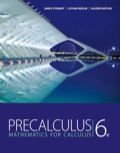
Concept explainers
(A)
To define:
The definition of integers
(A)
Explanation of Solution
Given:
The integer number
Concept used:
The set of integers consists of zero
Calculation:
An integer (from the latin integer meaning whole) is colloquially defined as a number that can be written without a fraction component
For example :-
The set of integers consists of zero
It is denoted by
The integers from the smallest group and the smallest ring the natural numbers
(B)
To define:
The definition of a rational number
(B)
Explanation of Solution
Given:
The rational number
Concept used:
Anrational number is a number that can be expressed as the quotient or fraction
Calculation:
In mathematics
Anrational number is a number that can be expressed as the quotient or fraction
Since q may be equal to
Every integeris a rational number
The set of all rational numbers , the rationals, field of rational , or the field of rational numbers is usually denoted by
The decimal expansion of a rational number always either terminates aftera finite number of digits
Any repeating or terminating decimal represents a rational number
(C)
To define:
The definition of airrational number
(C)
Explanation of Solution
Given:
The irrational number
Concept used:
The set of all irrrationalnumbers , the irrationals, field of irrational , or the field of irrational numbers is usually denoted by
Calculation:
In mathematics
An irrational number is a number that can notbe expressed as a fraction for any integers and irrational numbers have decimal expansions that neither terminate nor become periodic
Every transcendental number is irrational number
The irrational numbers are all the real numbers
The ratio of lengths of two line segments is an irrational number
Irrational numbers are the ratio
The set of all irrrationalnumbers , the irrationals, field of irrational , or the field of irrational numbers is usually denoted by
(C)
To define:
The definition of a real number
(C)
Explanation of Solution
Given:
The real number
Concept used:
The set of all real numbers, field of real , or the field of real numbers is usually denoted by
Calculation:
In mathematics
A real number is a value of a continuous quantity that can represent a distance along a line
The real numbers include all the rational numbers
Such as the integers abd fraction and all irrational numbers
The set of real numbers is uncountable
That is both the set of all natural numbers and the set of all real numbers are infinite sets
The cardinality of the set of all real numbers is strictly greater than the cardinality of the set of all natural numbers
The set of all real numbers, field of real , or the field of real numbers is usually denoted by
Want to see more full solutions like this?
Chapter 1 Solutions
EBK PRECALCULUS: MATHEMATICS FOR CALCUL
- = 5 37 A 4 8 0.5 06 9arrow_forwardConsider the following system of equations, Ax=b : x+2y+3z - w = 2 2x4z2w = 3 -x+6y+17z7w = 0 -9x-2y+13z7w = -14 a. Find the solution to the system. Write it as a parametric equation. You can use a computer to do the row reduction. b. What is a geometric description of the solution? Explain how you know. c. Write the solution in vector form? d. What is the solution to the homogeneous system, Ax=0?arrow_forward2. Find a matrix A with the following qualities a. A is 3 x 3. b. The matrix A is not lower triangular and is not upper triangular. c. At least one value in each row is not a 1, 2,-1, -2, or 0 d. A is invertible.arrow_forward
- Find the exact area inside r=2sin(2\theta ) and outside r=\sqrt(3)arrow_forwardA 20 foot ladder rests on level ground; its head (top) is against a vertical wall. The bottom of the ladder begins by being 12 feet from the wall but begins moving away at the rate of 0.1 feet per second. At what rate is the top of the ladder slipping down the wall? You may use a calculator.arrow_forwardExplain the focus and reasons for establishment of 12.4.1(root test) and 12.4.2(ratio test)arrow_forward
- Use 12.4.2 to determine whether the infinite series on the right side of equation 12.6.5, 12.6.6 and 12.6.7 converges for every real number x.arrow_forwarduse Cauchy Mean-Value Theorem to derive Corollary 12.6.2, and then derive 12.6.3arrow_forwardExplain the focus and reasons for establishment of 12.5.4arrow_forward
 Calculus: Early TranscendentalsCalculusISBN:9781285741550Author:James StewartPublisher:Cengage Learning
Calculus: Early TranscendentalsCalculusISBN:9781285741550Author:James StewartPublisher:Cengage Learning Thomas' Calculus (14th Edition)CalculusISBN:9780134438986Author:Joel R. Hass, Christopher E. Heil, Maurice D. WeirPublisher:PEARSON
Thomas' Calculus (14th Edition)CalculusISBN:9780134438986Author:Joel R. Hass, Christopher E. Heil, Maurice D. WeirPublisher:PEARSON Calculus: Early Transcendentals (3rd Edition)CalculusISBN:9780134763644Author:William L. Briggs, Lyle Cochran, Bernard Gillett, Eric SchulzPublisher:PEARSON
Calculus: Early Transcendentals (3rd Edition)CalculusISBN:9780134763644Author:William L. Briggs, Lyle Cochran, Bernard Gillett, Eric SchulzPublisher:PEARSON Calculus: Early TranscendentalsCalculusISBN:9781319050740Author:Jon Rogawski, Colin Adams, Robert FranzosaPublisher:W. H. Freeman
Calculus: Early TranscendentalsCalculusISBN:9781319050740Author:Jon Rogawski, Colin Adams, Robert FranzosaPublisher:W. H. Freeman
 Calculus: Early Transcendental FunctionsCalculusISBN:9781337552516Author:Ron Larson, Bruce H. EdwardsPublisher:Cengage Learning
Calculus: Early Transcendental FunctionsCalculusISBN:9781337552516Author:Ron Larson, Bruce H. EdwardsPublisher:Cengage Learning





